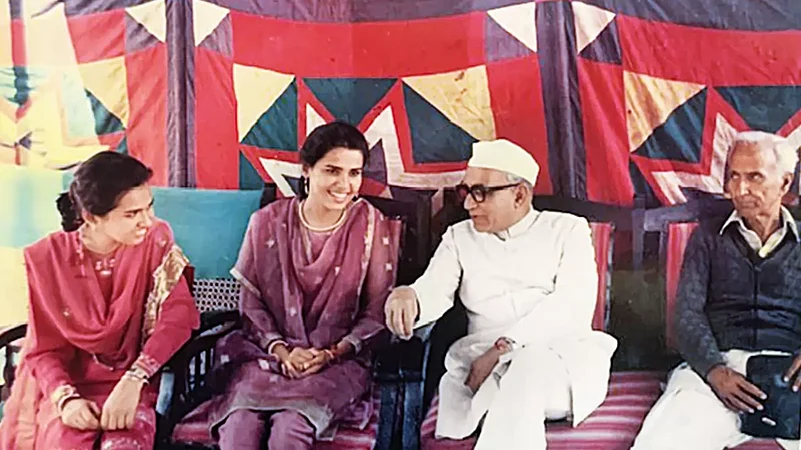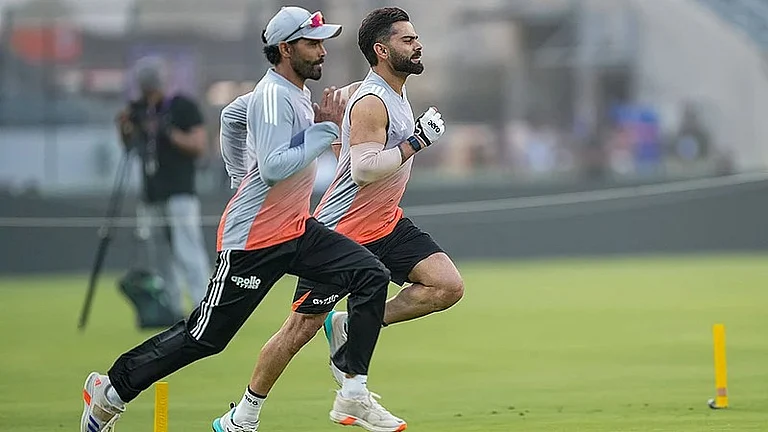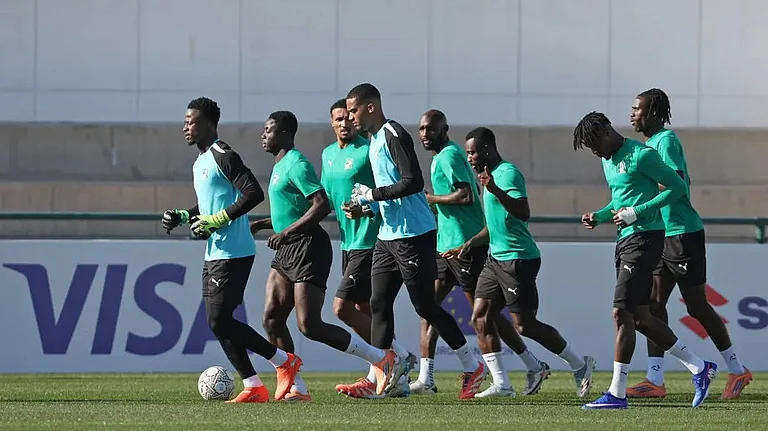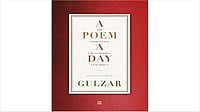There was a time when the historic city of Badaun (also spelt as Budaun and pronounced Badayun), in the heart of the Rohilkhand region, was known for three things: pirs, poets and peras. The 13th-century Sufi saint, Nizamuddin Auliya, was born here and the two prominent dargahs known as Chhote Sarkar and Bade Sarkar drew thousands from far and wide. The pera made here – especially those at Mamman Khan Halwai’s from sweetened milk, boiled till its golden-brown, somewhat grainy residue could be compressed into discs and dusted with powdery sugar – drew its fair share of admirers in a ‘pera belt’ girding the girth of western Uttar Pradesh. But it was the sufis, poets and men and women of letters, really, who had put this otherwise nondescript, dusty, little town on the map. It was once said, only partly in jest, that if you were to toss a pebble at a busy cross-section anywhere in this city, it would be sure to hit a poet – or two!
There was something about this little town beside the River Sot, a tributary of the Ganga that flows nearby, that sprouted ilm-o adab from its nooks and crannies. Ismat Chughtai, Jeelani Bano, Dilawar Figar, Ale Ahmad Suroor, Bekhud Badayuni, Ada Jafri, Fani Badayuni, Irfan Siddiqui, Shakeel Badayuni -- the list of writers born here is long and illustrious. Far away from his watan, Irfan Siddiqui had lamented the loss of his ancestral city thus:
Badaun teri mitti se bichhad kar ji raha huun main
Nahin, ai jaan-e-man, bar-e-digar aisa nahin hoga
(Separated from your soil, Badaun, I am living somehow
No, my dearest, this will not happen yet another time)
Much like adab, a syncretic culture too once blossomed in this soil nurtured by sufis and mystics. Just as Delhi came to be called 22 Khwaja ki Chaukhat, Badaun too had its many big and small shrines scattered across its many congested lanes earning it the moniker Badaun Sharif (Noble Badaun) or even Madina-e Auliya (the Madina of the Friends of God). Mushafi Ghulam Hamadani was not being facetious when he said:
Qaatil tiri gali bhi Badaun se kam nahiin
Jis ke qadam qadam pe mazaar-e-shahiid hai
(O my murderer, your alley is no less than a street of Badaun
On every step there is the shrine of a martyr)

My mother’s family hails from Badaun and much of my childhood was spent listening to fantastic stories about life in the two old neighbourhoods of Maulvi tola and Sota mohalla where the extended family had lived for generations. My grandparents, both true-blue Badayunis, had a fund of myths, legends, anecdotes to share – both thrilling and inspiring, in turns. Some were of the many alims and maulvis in the family (hence the name Maulvi tola) whose learning was so renowned that djinns came to study with them in the guise of boys as well as the many karamaat (miracles) associated with the buzurgs (elders) and auliyas buried here. Some stories re-created for us city-bred children a lost world, a genteel Urdu-speaking milieu redolent with tehzeeb (manners). Others recounted how a love for learning was virtually hard-wired in the DNA of Badaun-wallahs of yore: of mothers and aunts, many with no formal education, who could recite entire diwans, of the prodigious memory and voracious appetite for books and reading as though there was something in the very air of Badaun that made one fall in love with the literary arts.
A continuously inhabited site, it was known as Vedamau in the Mahabharata and Buddhmau in Buddhist times which eventually got corrupted to Badayun. Captured by Qutb-ud-din Aibak in 1196, Badaun soon became an important outpost of the Delhi Sultanate. In 1223, Aibak’s successor and son-in-law, Shamsuddin Iltutmish, built an imposing mosque crowned with a big central dome, now known as the Jama Masjid. Till Delhi’s Jama Masjid was built, this was the largest congregational mosque in India. Iltutmish’s son and heir, Rukn-ud din Firuz, and daughter, Razia Sultan, who would go on to be the first woman to rule from Delhi, were both born in Badaun. By the 13th century, Badaun had emerged as an important centre of Islamic learning with sufis and students flocking to its many madrassas (religious schools) and khanqahs (spiritual retreat). Mystically inclined men from distant cities in Central Asia – Farshor, Balkh, Sabzwar, Gilan, Hamadan – built their astana (mystic’s abode or hospice) here.
Delhi’s best-loved sufi, Hazrat Nizamuddin Auliya was born in Badaun in a modest home, his father Ahmad’s father having migrated from Bukahra to Badaun. Hazrat Nizamuddin’s father died when he was just five years old; his mother chose Badaun’s most gifted teachers for her son’s education. It was through a travelling musician who had been to both Multan and Ajodhan that the young Nizamuddin, then 12 years of age, heard of Baba Farid who was later to become his pir in the Chishti silsila going back to Khwaja Moinuddin Chishti. At 16, Nizamuddin travelled to Delhi with his mother and sister, making it his home; however, Badaun remained a revered city not just for his disciples but for all mystically inclined people. Hazrat Nizamuddin’s best-known disciple, the poet-chronicler, Amir Khusro, declared the dust of Badaun to be better than the finest surma to cool the eyes.

The Taj al-Ma’athir (literally meaning ‘a crown of glorious deeds’, a history of the Delhi Sultanate) refers to Badaun as ‘the mother of cities’ and ‘one of the important cities of the country of Hind’. By Balban’s time, Badaun had emerged as an important garrison town with its Governor entrusted with the task of maintaining a large contingent of troops that could be easily, and quickly, sent to Delhi when the need arose. Badaun crops up repeatedly in Baburnama and Akbarnama as a city of eminence; in fact, several scholarly notes have been written in academic journals about the debate among translators over its correct spelling.
Today, Badaun’s rich cultural history and Sufi past, as also its proximity to the power centre in Delhi, has been relegated to the ash-heap of history, rendered obsolete by the bugbear of electoral politics, worthy not even of a mention in qissa-kahani (oral histories) of the garden variety. Muslims comprise 43.9% of the city’s population, mostly poor and disenfranchised, some working as mechanics, others involved in the zari-zardozi cottage industry; writers, poets and mystics have long left its dusty alleys. Faring poorly in the BJP-SP-BSP tussle, Badaun’s Muslims are inconsequential in the electoral math of modern India, despite their size.
I last visited Badaun for a family wedding when my grandmother, Amma as we called her, was alive and well. Apart from the food and festivities, two incidents stand out clearly in my memory decades later: the first, a visit to the family burial ground when Amma clung to the grave of a recently departed aunt and wept. Watching her hugging that mound of kachchi mitti (moist earth), I had a moment of epiphany: this is what watan ki mitti (the earth of one’s homeland) means; the second, when we went to look at the Jama Masjid and Amma, tired from all her exertions, happened to sit down at the mimbar (pulpit). A passing man, unused to seeing women in the mosque, attempted to reprimand her and Amma ticked him off roundly with her customary self-confidence: “Kahan likha hai ke hum yahan nahi baith sakte? Aur tum kaun ho?” (‘Where does it say that I can’t sit here? And who are you?’) Challenging patriarchy seemed an admirable quality to my young, impressionable mind, one I thought was eminently worth emulating. Equally strong was the impress of belonging: to a land that had been home to one’s ajdaad (ancestors) for 800 years.
As Badaun finds itself in the middle of a new controversy, already being billed an ‘Ayodhya-in-the-making’, I wonder what Amma would have made of the shrill cries to rewrite history.
(Views expressed are personal)
Rakhshanda Jalil is a Delhi-based writer, translator and literary historian

























